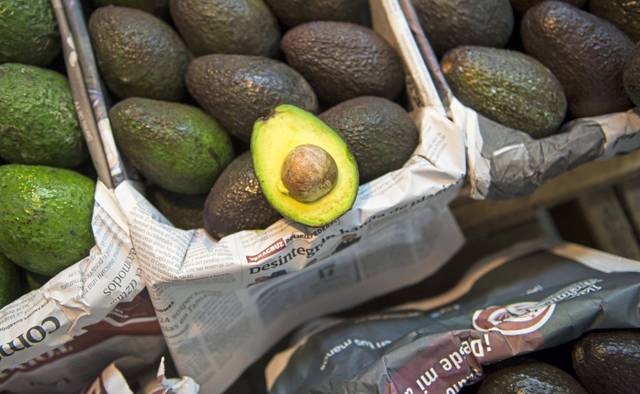Out with the bad, in with the good — cholesterol, that is
Why do we hear so much about bad cholesterol and so little about good cholesterol?
It’s mostly because your good cholesterol level is largely determined by genetics, says Dr. Jose Mejia, an Excela Health primary care physician.
That means there’s only so much you can do about it, he says. There’s more you can do to regulate your bad cholesterol level — through diet, exercise and medications — and that’s why it gets more press, so to speak.
To review, the body needs blood cholesterol, a waxy, fatty substance made by the liver, for important tasks like making hormones and digesting fatty foods.
Cholesterol travels through the blood on two types of protein, called lipoproteins.
LDL (low-density lipoprotein), the “bad” cholesterol, makes up most of the body’s cholesterol. HDL (high-density lipoprotein), the “good” cholesterol, absorbs cholesterol and carries it back to the liver, to be flushed from the body. While high levels of LDL cholesterol raise the risk of heart disease and stroke, high levels of HDL cholesterol can lower the risk.
According to the 2018 guidelines published in the Journal of the American College of Cardiology, the ideal HDL number for an adult is 60 or higher, while the LDL number should be less than 100. Total cholesterol number should be less than 200, and the lower the better.
“Good cholesterol is a protective form, so having a higher number is beneficial,” Mejia says.
Risks and benefits
Because the body makes all the cholesterol it needs, health experts recommend limiting cholesterol in the foods we eat.
Mejia says that there are medications that can boost good cholesterol, but the risk of side effects and the cost can outweigh the benefits.
“It’s easier to bring down the bad cholesterol numbers with medication with fewer side effects or risk,” he says.
While optimum cholesterol numbers are a good guideline, Mejia says, they aren’t set in stone for everyone. That’s why it’s important to consult with a health provider who knows your total health history and can help you address other issues that can affect cholesterol levels.
In general, he says, it benefits everyone to follow a diet based on fruits, vegetables and lean protein and low in saturated fats — which means limiting favorite indulgences like cheese and ice cream.
“Individuals will respond differently to dietary intake, so it is recommended to keep dietary cholesterol intake to 200 (milligrams) or less per day, since there is not a test available to determine who responds to dietary cholesterol intake,” says Ian Hunter, a clinical dietitian with The Well Being Center at Excela Health.
Boost your numbers
Hunter offers these recommendations for boosting good cholesterol:
• Exercise — Physical activity can help elevate HDL cholesterol and help promote a healthy weight that can help lower your risk for high cholesterol.
• Embrace fiber — Fiber binds to cholesterol in your diet and can act as a way to lower LDL and total cholesterol. Good sources of fiber are whole forms of fruits/vegetables and whole grains. Choose whole grain options such as oatmeal or bread that have “100% whole grain or whole grain flour” listed as the first ingredient. If choosing a fiber supplement, look for one with psyllium or methylcellulose fiber.
• Stop smoking — smoking is linked to increased LDL cholesterol and decreased HDL. This is even more prevalent in women.
• Choose plant sterols and stanols — These compounds can help combat total and LDL cholesterol levels. Small amounts of these are found naturally in whole grains, oils made from vegetables, nuts and seeds. Food manufacturers also will fortify food such as orange juice, breakfast bars and spreads with plant sterols/stanols.
• Reduce saturated fat — Studies have shown a correlation of decreased total and LDL cholesterol levels by replacing saturated fats, found in animal products like butter, whole fat dairy and fatty meats, with unsaturated fats. Saturated fat should make up 7% or less of your total daily calorie intake.
• Choose healthy fats — This includes foods such as salmon, walnuts and flax seed that contain Omega-3 fatty acids.
• Choose low fat or fat-free dairy options — These include 1% milk, non-fat yogurts and reduced-fat cheeses.
HDL-friendly foods
Adopting a Mediterranean-style diet can help with cholesterol levels. The following foods are HDL cholesterol-friendly:
• Olive oil — Use extra-virgin olive oil in cooking (but keep the temperature low, since extra-virgin olive oil breaks down at high heat), salad dressings and sauces. Drizzle over cooked foods to add flavor. Add olives to salads and other dishes. Don’t go overboard, though, as olive oil is high in calories.
• Whole grains — Bran, cereals and brown or wild rice may lower LDL and total cholesterol, which boosts HDL percentage. Whole grains contain soluble fiber, which is shown to help lower LDL.
• Beans and legumes — Black beans, black-eyed peas, kidney beans, navy beans, lentils and others are packed with soluble fiber. Beans also have folate, a heart-healthy B vitamin.
• High-fiber fruit — Nosh on prunes, apples and pears, for example, to lower LDL level and raise HDL level.
• Fatty fish — Eat two servings per week of fish such as salmon, mackerel, albacore tuna, sardines and rainbow trout. If you don’t like fish, consider a fish-oil or krill-oil supplement to supply those omega-3 fatty acids.
• Avocado — The creamy green fruit is having a moment, thanks to the avocado toast craze. Avocados are high in folate and monounsaturated fat, which lowers LDL and reduces the risk of stroke, heart attack and heart disease. They’re also high in fiber.
• Nuts — They’re also high in fiber and contain those plant sterols that block the absorption of cholesterol. Snack in moderation, as nuts also are high in calories.
• Soy — While soy itself may not specifically reduce bad cholesterol, people often add it to their diet as a meat substitute. This and other healthy food choices can up good cholesterol levels.
• Ground flax seed and chia seed — They’re also high in omega-3 fatty acids.
Source: healthline.com
Shirley McMarlin is a Tribune-Review staff writer. You can contact Shirley by email at smcmarlin@triblive.com or via Twitter .
Remove the ads from your TribLIVE reading experience but still support the journalists who create the content with TribLIVE Ad-Free.



